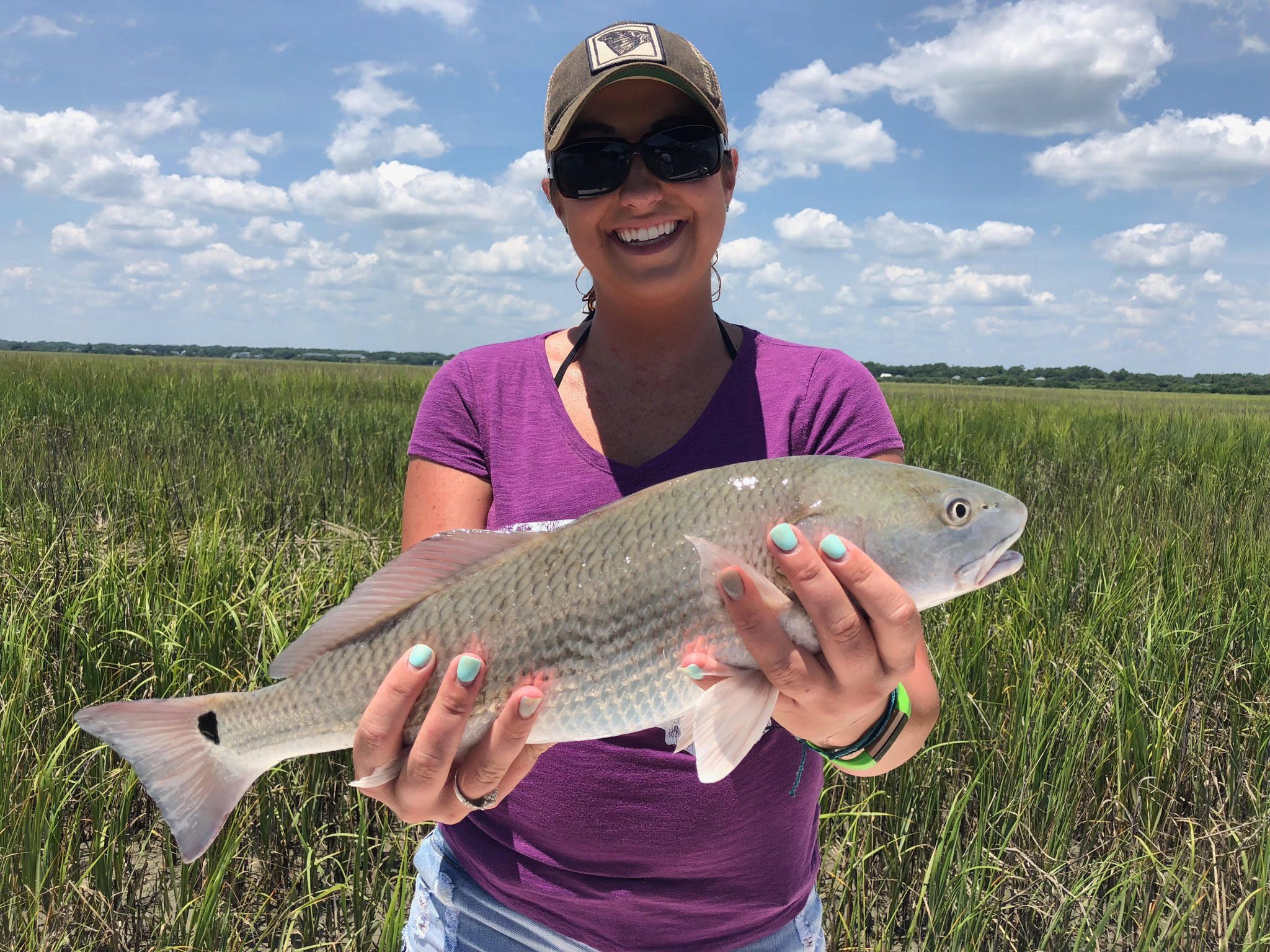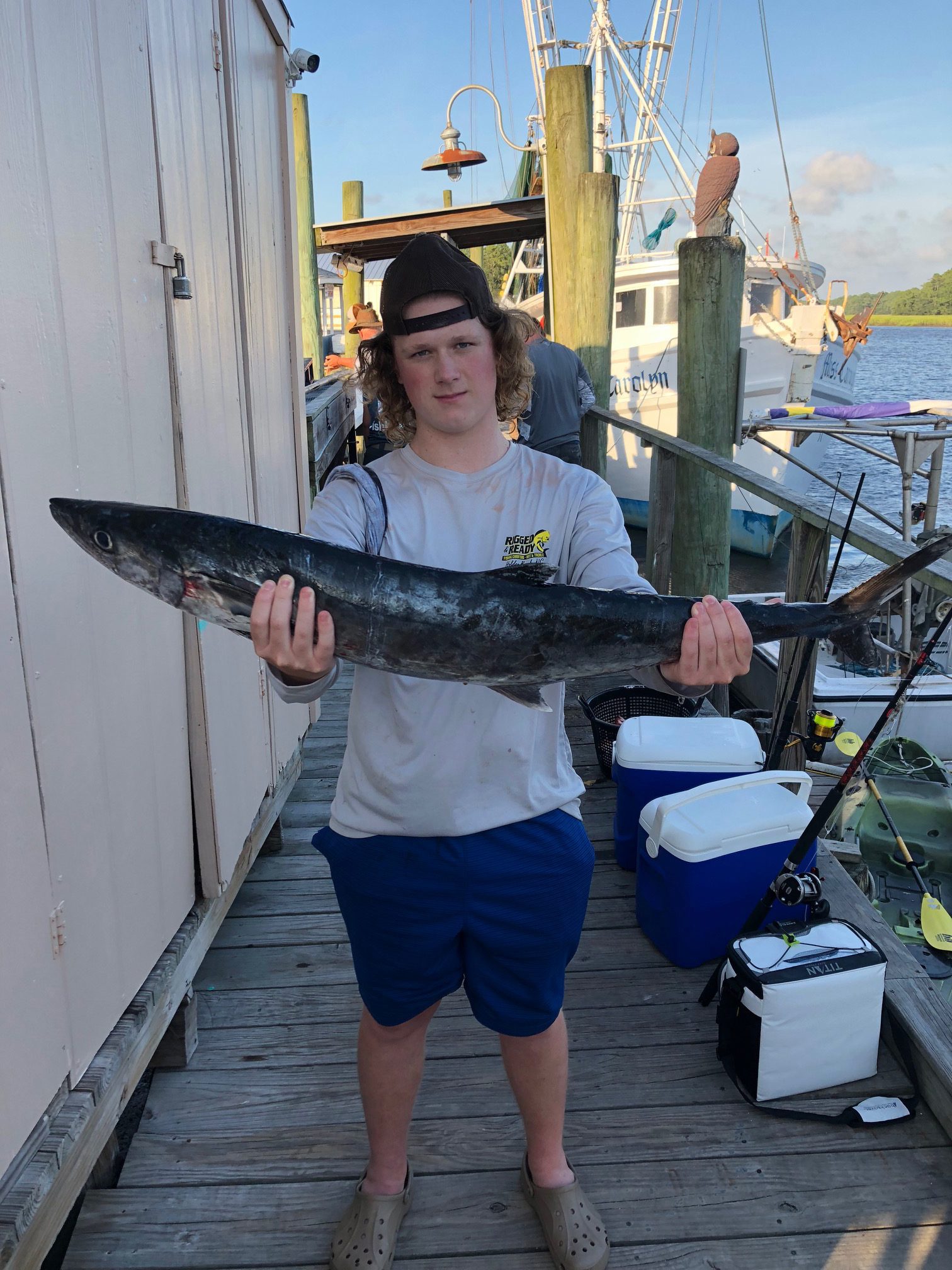North Myrtle Beach – Aug 30, 2018
Patrick, of Captain Smiley Fishing Charters, reports that inshore water temperatures are in the mid to upper-80s. The water has been murky, but the action hasn’t been slowed.
There’s a healthy shrimp population in the area, which has led to a great (up to 8 lbs.) black drum bite. The best action has been on the falling tide near docks and along deeper ledges in about 12’ of water.
Redfish have also been enjoying live shrimp, especially under a popping cork. They can be found on the flats during a falling tide, though most have been either under or over-slot.
A few flounder have been caught here and there on live finger mullet and new penny Gulp shrimp and Swimming Minnows. Look for the flatties on the low to rising tide in about 5-10’ of water.
Speckled trout have been small and reluctant to bite, but the ones that are being caught are coming from creek mouths or oyster bed edges. Live or Vudu shrimp under a popping cork should get attention.
Ken, of Fin and Feather Light Tackle Fishing Charters, reports that the creeks are still holding plenty of 23-30” red drum, especially in shallow water with a slow-moving current. Gulp and Vudu shrimp (color hasn’t seemed to matter) on 1/8 oz. jig heads are the ticket, as well as Carolina-rigged mullet. Setting up at the mouth of feeder creeks and waiting for fish to come to you is still a good strategy for getting a nice red. If the current is moving a little faster or you’re fishing deeper holes, move up to a 1/4 oz. jig head.
Trout are starting to make an appearance in the backwaters. They haven’t been much bigger than 18”, but the bite is definitely picking up.
Flounder are still coming in on slow-worked, Carolina-rigged mullet on the bottom. Black drum between 13-17” are being caught near docks at low tide, with fresh cut shrimp on 1/4 oz. jig heads or Carolina rigs producing the most bites.

Jilian Galindo with a nice redfish that fell for a live pogie on a Carolina rig. She was fishing the incoming tide near Ocean Isle with Ken Salos, of Shallow Minded Fishing Charters.
Keith, of Low Country Fishing Charters, reports that speckled trout are plentiful if you know where to look. The main trick is to fish deeper than other boats, as a lot of the specks are hanging in depths of 10’ or more. You can find 18-20” fish swimming in the creeks on the oyster beds and along the grass lines, especially on the rising tide. Live shrimp is the go-to bait.
Redfish are swimming near ICW docks and the holes around them, and plenty of flounder are hugging the bottom in Tubbs Inlet. While a lot of throwbacks have been in the mix, all of the keepers have been between 18-20”. Menhaden and mullet are working well for bait.
Black drum can be found in the deeper creek holes, along with some sheepshead. Both are biting live shrimp.
Off the beach, spanish mackerel have moved deeper to 30-35’ of water, where #2 or even #3 planers may be necessary with your favorite Clarkspoon. Most of the spanish have been between 18-24”, and they are more plentiful than they have been in the past months.
Shark anglers will be glad to hear that blacktips, spinners, and more are thick off the beach.
Kings are hanging in the 20+ mile range.
This is the best time of year for Gulf Stream bottom fishing, and it’s easy to fill the box on any given day with a mix of grouper, amberjacks, black sea bass, and vermilion snapper.
Bob, of Strange Magic Fishing Charters, reports that fishing has drastically improved thanks to a recent string of good weather. Trout are being caught in increasing numbers, especially around oyster bars and creek choke points. A live shrimp paired with a popping cork is the way to hunt for the specks, but artificials have made the difference at times, too.
Flounder are being caught with live minnows near docks and creek holes, especially on a falling tide. Red and black drum are also hanging around the docks, and with slightly lower water temperatures, the action has turned on a bit more. Live and fresh shrimp seem to work best.
Keep in mind that fish like structure, safety, and a good food source. If you can find a spot with all three, you’ll be bringing fish over the rails in no time.

Jerry Garrett with a 29 lb. king mackerel that he hooked on a pink skirted cigar minnow while fishing offshore of Little River.
Larry, of Voyager Fishing Charters, reports that plenty of big spanish and barracuda are hanging right outside of the inlet.
In the 5-10 mile range, in about 40-60’ of water, you can expect to find a lot of black sea bass, small porgies, and Atlantic sharpnose sharks. Cut squid and sardines seem to be working the best.
At around 25 miles, trolling Drone spoons will hook up with some nice king mackerel and big bonita.
On the continental shelf (about 49 miles out of Little River Inlet), bottom fishing has been phenomenal, with plenty of beeliners, scamps, triggers, grunts, porgies, and amberjacks all filling the boxes of every boat that’s been out. The northeast wind has made for choppy seas but fantastic fishing.
Perry, of Cherry Grove Pier, reports that the water around the pier finally cleared up over the past weekend, and a mixed bag of whiting, croaker, and a few spanish have started biting.
